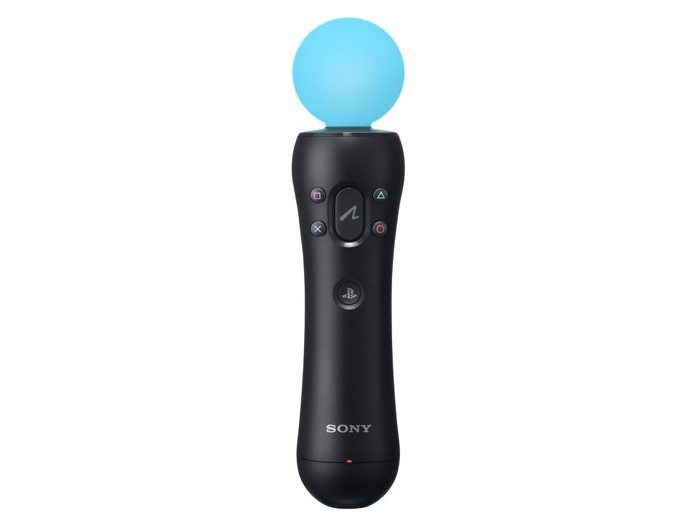Why you can trust TechRadar
The most noticeable thing about Move's primary controller is the glowing ball on top, unsurprisingly. When the controller is off, the orb is white and softly translucent, and looks remarkably like a ping-pong ball (it's about the same size as one, too).
When the controller's in full use, the ball lights up in a range of colours, so it can be tracked by the PlayStation Eye camera. While the ball might seem to be a weak point should the controller ever make contact with your wall/lamp/friend's skull, it's actually squishy, and just pops back into shape after an impact.
The rest of the controller has a more organic look than the Wii remote. It's round, and becomes slightly thinner in the middle, presumably to be more ergonomic.

On the front, you have the four familiar PlayStation face buttons, though the fact that they're arranged in a square, rather than a diamond, makes it a little hard to remember which one is where for a while.
Between those is the Move button, a thumb-sized new addition, clearly meant as Move's version of the Wii remote's big A button.

Beneath those is the PS button, which serves the same function is it does on the DualShock 3 or SixAxis controller of bringing up the XMB. It sits in a concave, which avoids accidental presses neatly.
The underside of the controller is mostly clear, but features a trigger, known as the T button. This is analogue – like R2/L2 on the DualShock 3 or the left and right triggers on the Xbox 360 controller – in contrast to the crisp, clicking B button on the Wii.

The left-hand side features the Select button, which is quite hard to hit, but is rarely needed.

On the right side, you find the Start button, which can be pressed accidentally depending on you hold the controller, though it only happened once or twice.

At the base of the move is a micro-USB port for charging, a slot for the provided wrist straps, and two mystery connectors that could be used for accessories in the future.
At first, the Move controller feels a little more comfortable than the Wii remote. It's not that Nintendo's controller was uncomfortable, but the roundness of Move goes some way toward helping it sit neatly in the hand.

That said, we found that we started to feel the effects of prolonged use faster with Move, and we think it's to do with the shape. The tapered middle means you're often gripping harder than you would have to with the Wii's controller, especially when playing something with hard swings, like Table Tennis on Sports Champions. Discomfort in the wrist crept in earlier than it did during an equivalent session of Wii Sports Resort.
Let's be clear, though: We're not saying Move is painful, uncomfortable, bad for you, or anything like that (assuming you have no joint problems to begin with). After all, we were playing for quite long periods during our review time, though not unusually long for a committed gamer.
We're not even saying it's definitely less comfortable than the Wii remote – as we said, it's actually a bit nicer just to hold – but we do think that the shape isn't ideal for long periods of the more wrist-bending games.
There are a few other things about the Move's design that seem a little odd to us. Why add a new button with the Move logo (which is, let's remember, just a squiggly line, and so doesn't jump out at you on-screen), when Sony could have just used X or Circle?
Of course, the most contentious design decision will always be that orb. We don't deny that accuracy that it brings (more on that later), but it really does look silly. We're not going to make the laboured sex-toy joke, because all of your friends who see it will. Seriously, it's not just a meme – it's the first thing that people who've never even heard of Move say.
The light is also quite distracting. If you're trying to do something else in the room while someone's playing a game with two controllers, your eye is constantly drawn. The Wii remote was designed to be inconspicuous – the shape fits in with your TV remotes, and it almost disappears into your hand when you hold it – but this can be borderline gaudy.
That said, motion-controlled gaming always has and always will make you look a bit weird. It's not like the wild flailing was dignified before the glowing ball was added, so maybe we should just be happy with the extra accuracy and possibilities it offers.
- Best PlayStation VR games: put that Move to good use
Current page: Sony PlayStation Move: Design
Prev Page Sony PlayStation Move: Overview Next Page Sony PlayStation Move: Performance